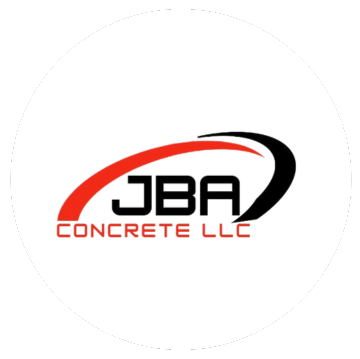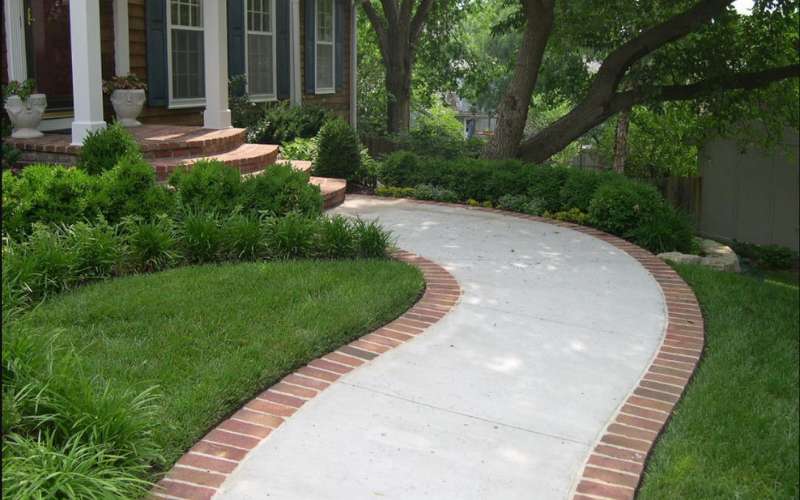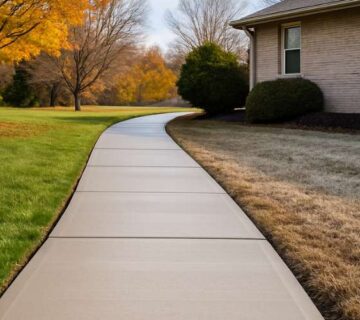Concrete walkways are essential in high-traffic areas. They must be durable, visually appealing, and safe for daily use. Designing concrete walkways for high-traffic areas requires careful planning to ensure longevity and functionality. Have you ever noticed cracks or uneven surfaces on walkways? Poor design often leads to costly repairs. In this guide, we will explore the best practices for creating walkways that withstand heavy foot traffic while maintaining an attractive look. Keep reading to discover expert tips on walkway design.
Essential Tips for Durable Concrete Walkways in High-Traffic Areas
Designing concrete walkways for high-traffic areas requires strategic planning. The right materials, design, and construction methods ensure durability and safety. Below, we explore essential factors that contribute to long-lasting and aesthetically pleasing walkways.
Choosing the Right Concrete Mix
Selecting a high-quality concrete mix is crucial for walkways that endure heavy foot traffic. Consider these factors when choosing your materials:
- Compressive Strength: A mix with a strength of at least 4,000 PSI improves durability.
- Aggregate Selection: Crushed stone and sand enhance stability and reduce cracking.
- Additives and Sealers: Use air-entraining agents and sealers to prevent water damage.
The right mix ensures walkways resist wear and tear, making them last longer.
Proper Thickness and Reinforcement
The thickness of a concrete walkway affects its durability. To withstand high foot traffic, follow these recommendations:
- Minimum Thickness: Walkways should be at least four inches thick.
- Reinforcement: Use wire mesh or rebar to prevent cracks and improve load-bearing capacity.
- Compacted Base: A well-prepared base of compacted gravel adds stability.
Proper reinforcement reduces the risk of structural damage and extends the walkway’s lifespan.
Surface Texture and Finish
Walkways must provide traction to prevent slips and falls. The right finish ensures safety while maintaining an appealing look. Consider these options:
- Broom Finish: A slightly rough texture that enhances grip.
- Exposed Aggregate: Improves traction and adds decorative appeal.
- Stamped Concrete: Mimics brick or stone while offering durability.
Choosing the right texture prevents accidents and enhances walkway aesthetics.
Drainage and Water Management
Poor drainage leads to erosion, surface damage, and cracks. To protect your walkways, implement these solutions:
- Proper Slope: Walkways should have a slight slope for water runoff.
- Drainage Channels: Prevent water from pooling on the surface.
- Permeable Concrete: Allows water to pass through, reducing runoff issues.
Managing water effectively ensures long-term durability and reduces maintenance needs.
Expansion Joints and Crack Prevention
Concrete expands and contracts with temperature changes. Without proper control, this movement leads to cracks. Follow these best practices:
- Expansion Joints: Placed every four to six feet to control cracking.
- Control Joints: Allow concrete to expand without damaging the structure.
- Curing Process: Properly curing the concrete prevents shrinkage cracks.
Well-planned joints improve walkway flexibility and extend its lifespan.
Color and Decorative Enhancements
Aesthetic appeal is just as important as durability. Decorative options improve the look of walkways while maintaining strength. Popular choices include:
- Integral Coloring: Mixed into the concrete for long-lasting color.
- Stained Concrete: Adds depth and variation to the walkway surface.
- Patterned Stamping: Replicates natural stone or brick designs.
Decorative features enhance visual appeal while maintaining durability.
Regular Maintenance and Longevity
Even well-designed walkways need maintenance. Routine care prevents costly repairs and extends the lifespan of the concrete. Essential maintenance steps include:
- Sealing: Apply a protective sealant every two to three years.
- Cleaning: Remove dirt and debris regularly to prevent surface damage.
- Repairing Cracks: Address small cracks before they expand.
Proactive maintenance keeps walkways looking new and ensures safety for pedestrians.
Designing concrete walkways for high-traffic areas requires careful material selection, proper reinforcement, and regular upkeep. A well-planned walkway enhances safety, longevity, and curb appeal.
Enhance Your Walkways with Expert Concrete Design
A well-designed walkway improves safety, durability, and curb appeal. Whether for commercial spaces or residential areas, using the right materials and construction techniques ensures long-lasting results. If you need expert guidance for designing concrete walkways for high-traffic areas, we’re here to help! Contact us today for professional consultation and high-quality concrete solutions.





No comment